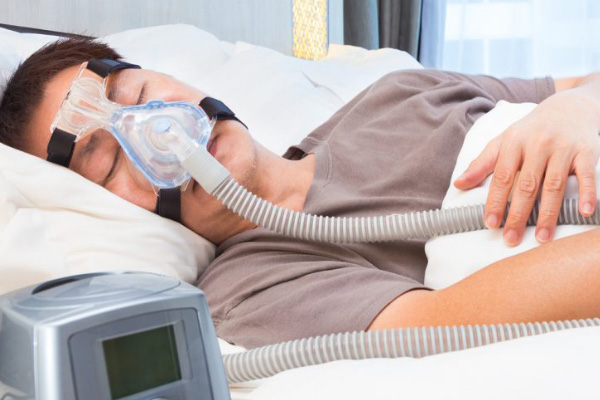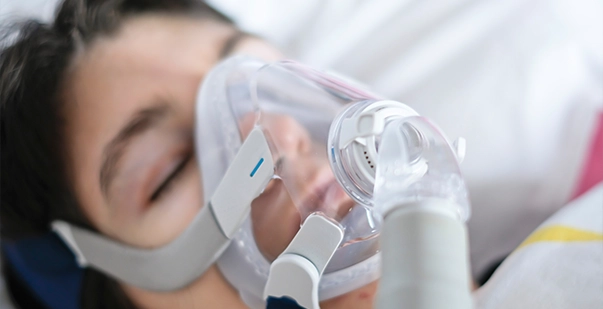BiPAP Rental: Easy Accessibility to Advanced Respiratory Tools
BiPAP Rental: Easy Accessibility to Advanced Respiratory Tools
Blog Article
Bipap vs. CPAP: Which Is the very best for Your Sleep Condition?
When navigating the intricacies of rest problems, the selection in between BiPAP and CPAP treatment is an important consideration. While CPAP gives a constant air movement appropriate for obstructive sleep apnea, BiPAP's double stress settings may improve convenience for those with more complex respiratory problems.
Comprehending Rest Disorders
Sleep disorders incorporate a variety of problems that interfere with normal sleep patterns, impacting both the top quality and duration of remainder. These problems can materialize in different forms, including sleeping disorders, rest apnea, narcolepsy, agitated leg disorder, and parasomnias. Each problem offers one-of-a-kind difficulties, often leading to substantial daytime fatigue, cognitive problems, and psychological disturbances.
Insomnia is defined by problem dropping or remaining asleep, while rest apnea entails duplicated disruptions in breathing during sleep, often bring about fragmented remainder. Narcolepsy, on the other hand, is noted by too much daytime sleepiness and abrupt sleep assaults. Restless leg disorder triggers uneasy feelings in the legs, motivating an uncontrollable impulse to relocate them, which can additionally hinder the ability to drop off to sleep.
The effect of rest conditions expands beyond private wellness, affecting total productivity, partnerships, and quality of life. Recognizing the specific nature of each condition is critical for effective diagnosis and therapy. As sleep health and wellness comes to be significantly identified as a vital part of general health, addressing these disorders is necessary for enhancing both rest high quality and everyday performance.
Just How CPAP Works
Constant Favorable Respiratory Tract Pressure (CPAP) therapy is frequently utilized as a main therapy for obstructive rest apnea (OSA) The mechanism of CPAP entails the usage of a device that provides a constant stream of air with a mask worn throughout rest. This air movement preserves favorable pressure in the respiratory tract, avoiding the collapse or blockage of the throat that can take place during rest.
When a client inhales, the CPAP machine provides a continual flow of air, making certain that the airway remains open - BiPAP Rental. This not just minimizes the symptoms of OSA, such as snoring and disrupted sleep patterns, yet also minimizes the affiliated wellness threats, including cardio issues and daytime fatigue
The pressure settings on a CPAP device can be tailored to meet private client requirements, often figured out through a rest study. Overall, CPAP treatment has been shown to substantially boost the top quality of sleep and overall health and wellness for people enduring from obstructive sleep apnea.
Just How BiPAP Functions
BiPAP, or Bilevel Favorable Airway Stress, is a specific type of non-invasive ventilation that is specifically beneficial for individuals with problems such as complicated sleep apnea or respiratory conditions. Unlike CPAP, which supplies a continuous stream of air at a single stress, BiPAP gives 2 distinct stress setups: a higher inspiratory pressure for breathing and a reduced expiratory pressure for exhalation. This dual-pressure strategy enables simpler breathing, minimizing the effort needed throughout exhalation.
The tool operates through a mask fitted over the nose or mouth, linked to a maker that produces air pressure. When the person breathes in, the machine provides the greater pressure to assist with air flow, making certain that the respiratory tract stays open. Upon exhalation, the maker automatically decreases the pressure, making it much more comfortable for the person to take a breath out.

Secret Differences In Between BiPAP and CPAP

On the other hand, BiPAP (Bilevel Favorable Respiratory tract Pressure) supplies 2 various pressure settings: one for breathing and a reduced one for exhalation. This double stress system allows for even more comfy breathing, especially for individuals who fight with exhaling versus a constant stress. BiPAP is visit homepage frequently suggested for clients with complicated sleep apnea, chronic obstructive pulmonary illness (COPD), or those who call for added support during sleep.
Moreover, the intricacy of BiPAP gadgets generally results in a greater cost and calls for a lot more mindful titration than CPAP. BiPAP Rental. Understanding these key distinctions can help in identifying which tool might be preferable for certain sleep problems, establishing the foundation for enlightened therapy choices
Picking the Right Treatment
Just how can one identify the most ideal therapy for handling rest disorders? The choice in between BiPAP and CPAP therapy primarily depends upon the certain qualities of the rest problem, the client's total wellness, and their comfort with the gadget. CPAP, which supplies a continuous stream of air, is typically prescribed for obstructive sleep apnea (OSA) It keeps an open air passage throughout rest, effectively protecting against apneas and hypopneas.
On the other hand, BiPAP offers two levels of stress: one for breathing and a lower one for exhalation. This twin pressure system is valuable for people with complicated rest apnea or those who experience trouble breathing out versus a continuous stress. Additionally, BiPAP is usually suggested for people with breathing problems, such as chronic obstructive lung condition (COPD), where varying stress setups can improve convenience and compliance.
Inevitably, a detailed evaluation by a sleep expert, consisting of a rest research study, can aid establish which treatment lines up ideal with the individual's needs. Elements such over at this website as comfort, simplicity of use, and specific clinical problems should also be taken into account to maximize treatment results.
Conclusion
In summary, both BiPAP and CPAP serve distinctive objectives in the management of rest disorders. CPAP is efficient for obstructive rest apnea through consistent air flow, while BiPAP uses dual pressure settings that improve convenience for those with complex sleep apnea or breathing concerns. The selection in between these treatments need to be directed by specific needs and conditions, necessitating a comprehensive examination by a sleep expert to guarantee optimal therapy end results and improved top quality of sleep.
:max_bytes(150000):strip_icc()/GettyImages-635878206-25ee9a42856f41cfab94873074580679.jpg)
In general, CPAP treatment has been shown to dramatically enhance the top quality of rest and general health and wellness for people enduring from obstructive rest apnea.
BiPAP is often advised for individuals with complicated rest apnea, chronic obstructive lung condition (COPD), or those that require extra support during rest.
CPAP is effective for obstructive rest apnea with get redirected here consistent air movement, while BiPAP uses double stress settings that boost convenience for those with complex sleep apnea or breathing problems.
Report this page